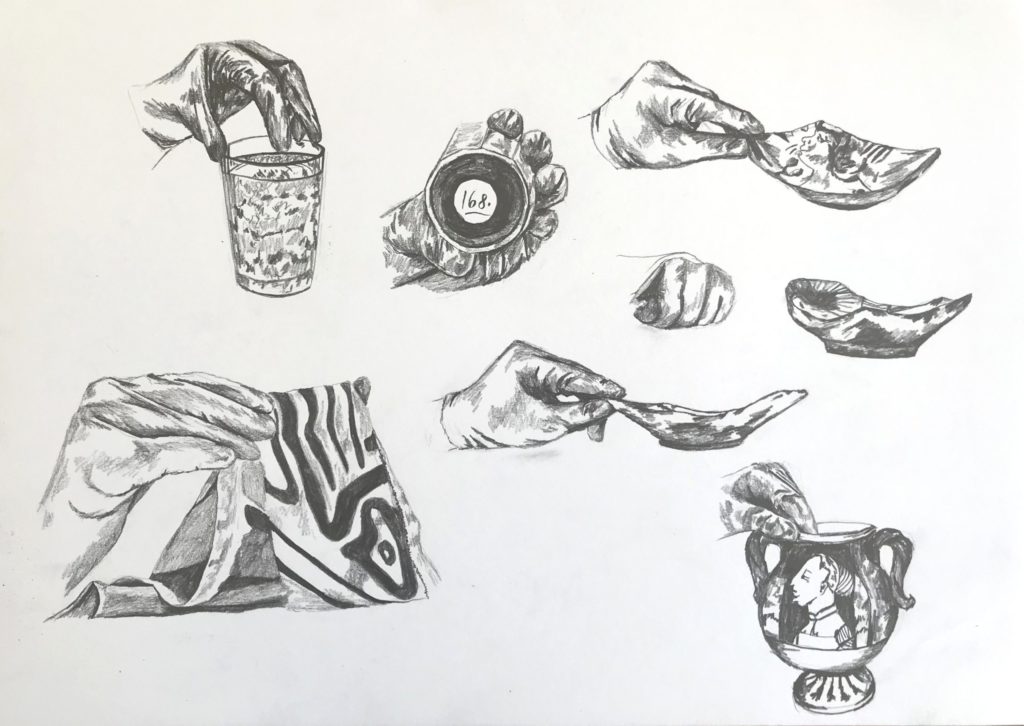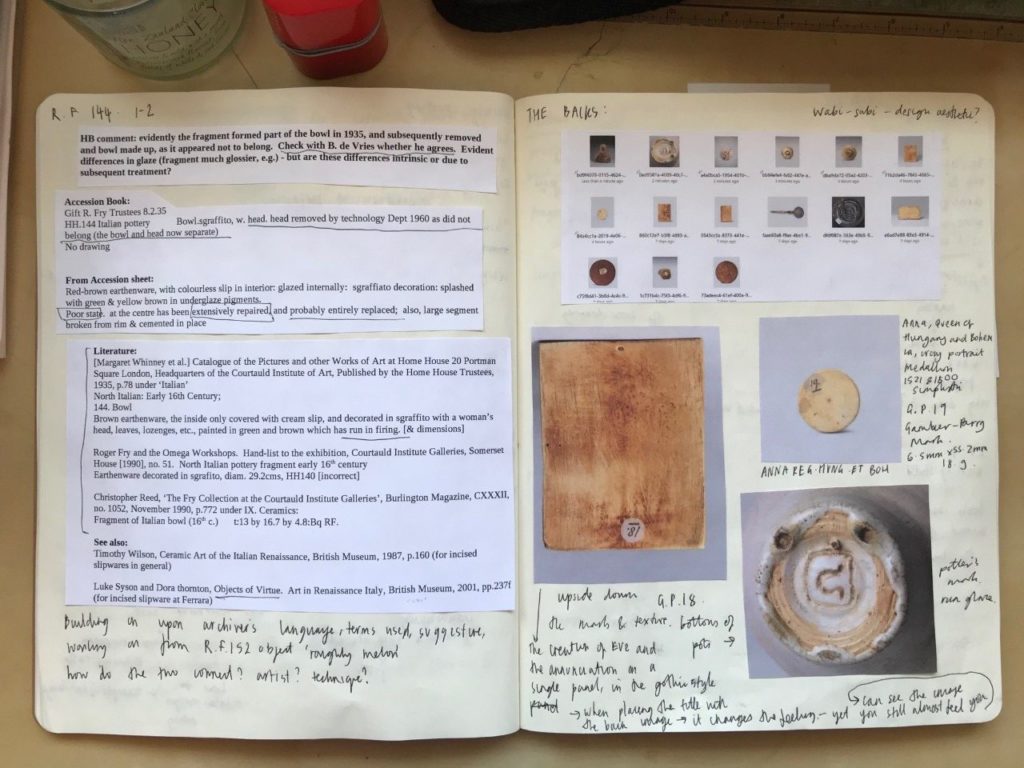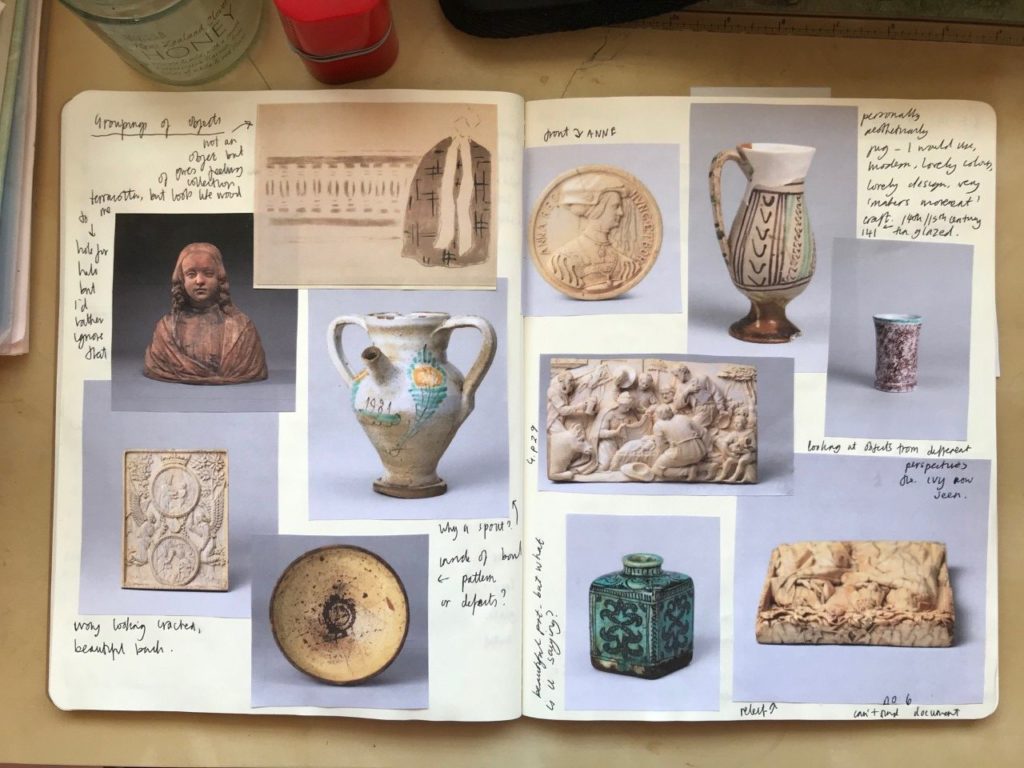
Having trained for 3 years in Bespoke Tailoring at London College of Fashion, followed by working for 3 years at different designers and now studying for my Masters in Design: Expanded Practice at Goldsmiths, I was thrilled to learn about my acceptance for the internship Illuminating Objects at the Courtauld and Science Museum.
I look at construction and making as part of design. I come to the Illuminating Objects Internship in a different context from previous students due to the current pandemic. While I will select my object entirely through a computer screen, I have been utilising my design background to examine these objects creatively. I have been drawn to objects in the collection which can be described as fragments, and to the narratives they enclose or inspire, exploring conversations that may arise from them, through gestures of movement and touch. The idea of fragment is a starting point in thinking how these objects relate to today’s material culture. Although both touch and ‘real life’ viewing have been removed from the internship thus far, I will use my design skills and my interest in drawing to connect with and understand the pieces I have selected for display. In contrast with previous internships, this one will have a strong focus on the process of selection itself. The eventual chosen object will be on display at the Science Museum in 2021.
My practice stems from being drawn to certain materialities. I make/design because I find the object, the point of intrigue: the rusty button, the hanging scrim cloth, the found dug up clay. I draw because I see the movement in the cloth on or off the body and where that can lead to in a design. I am particularly fascinated by even the word ‘object’ – the aesthetic look of it, the sound of it – which is what initially drew me to the Illuminating Objects Internship. With my course often looking at material libraries and the material processes in a scientific manner it seemed a wonderful opportunity to express these research threads. You can view more of my work here.
The whole process from my interview, to how I’ve been working has been a fully socially distanced process, from not being able to physically meet new people or see the storage areas or learning facilities, to not even entering the Science Museum. While this might have brought initial slight sadness, the internship is also focused in its digital platforms to showcase the process, and limitations I have found can often bring more interesting insights and pursuits. Along with guidance from the two curators at the Courtauld and Science Museum and the Courtauld’s gallery technician the conversations at our weekly meetings have offered a wealth of knowledge and inspiration leading down different paths for the objects.
I have always been interested in working for a gallery within this design frame, looking at how objects are displayed. When viewing other objects, I feel that taking an inanimate ‘dead’ object and displaying it in its own right gives it a specific a way to be viewed aesthetically rather than for purpose. With the object eventually being displayed at the Science Museum, it will bring a whole new concept to me in terms of the sculptural frame where my object will stand, compared to an art associated gallery format.
In light of the current circumstances, I have been able to have a longer selection process which has been wonderful. From scrolling through many image files and document files, your eye really starts hone in on the type of things that its drawn to and the type of language that spikes interest in the object documents. Because of the scope of the collection I was initially drawn to the backs of objects; their markings, their faded colours, their shapes correlating to the object itself, their almost minimalist artistic manner.


I have gradually narrowed down my search to four objects. The scarf, the fragment, the cups and the drug jar.
Objects that could be seen as fragments, or overlooked pieces, seemed to be the direction I was drawn towards but with a focus on the object’s everyday use within our material culture and how their narrative in the design could be obscured. Last week Matthew, the gallery technician, was able to go to the museum stores and show me these four objects through a video call. Holding, hanging and turning the objects around delicately, we discussed elements of the objects individually and then together. Seeing the fragment on its edge was beautiful, the bright colours of the scarf I was not expecting, the mirrored effect of the cups and the illustrated costume on the drug jar. It was so lovely even just to see a hand in a glove touching them, particularly within our pandemic context where touch and physical contact have been removed. It really brought new questions and conversation points to the objects. I was physically able to see them from different angles and how that changed their aesthetic appeal. I will be bringing these ideas together towards a design question for my proposal.

